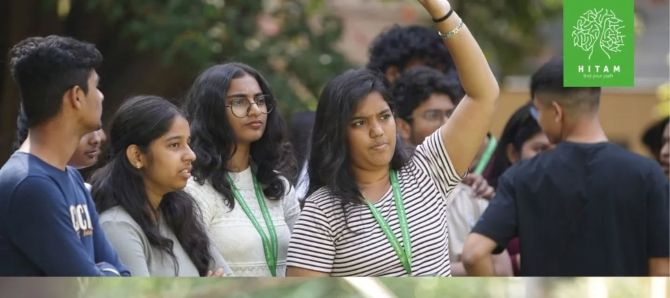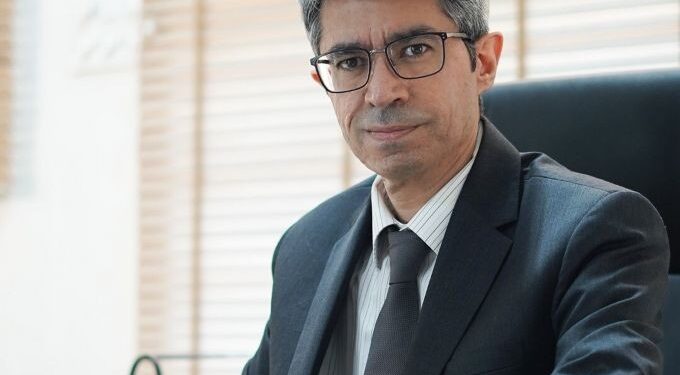1. As HITAM approaches its 25th anniversary, how would you reflect on the institution’s journey? Could you share key milestones and any plans for celebration?
One of our earliest and most defining milestones was the relocation from Medak to Medchal in 2007. This shift—from a rural to an urban setting—allowed for greater geographical and socio-economic diversity among our students and faculty. It also laid the foundation for our green campus initiative, earning us India’s first LEED Silver-rated educational building in 2008, with support from IGBC.
From there, our journey has been marked by a focus on teaching and learning innovation. In 2010, HITAM joined the Indo-Universal Collaboration for Engineering Education, aligning with our Chairman Mr. Prashanth Arutla’s vision to produce work-ready graduates—not just in skill, but in mindset.
A major leap came in 2016 when we partnered with Purdue University to launch the EPICS program—Engineering Projects in Community Service. We were recognized as a national model for EPICS in India, and today, there are 14 EPICS-partner institutions nationwide, five of which are in Telangana.
In 2021, HITAM enrolled students in the Grand Challenges Scholars Program (GCSP) of the US National Academy of Engineering. We were the first institution in India to have graduates from this program and remain among just four in the country, including Nirma and Plaksha Universities.
That same year, we strengthened our leadership team by welcoming Dr. Sanjay Dhande, former Director of IIT Kanpur, as Chair of our Governing Body. In 2022, Major General Mani Chandrashekhar joined us as Chief Mentor, offering strategic guidance and direct engagement with our students.
In 2012, we launched Student Self Governance (SSG)—a student-led initiative that mirrors the institution’s administrative structure. One day each month, SSG members take over operations, shadowing their counterparts to gain hands-on leadership experience.
Other key milestones include partnerships with IIIT-Hyderabad (2022), training faculty in Problem-Based Learning with Aalborg University (2024), and most recently, the launch of our Integrated Twinning Program (2025) with three US universities, further globalizing HITAM.
As for our 25th-year celebrations—truthfully, we’ve been so immersed in launching the twinning program and quality-improvement efforts that formal celebrations have taken a backseat for now.
2. HITAM recently introduced dual-degree programs. Who are these programs best suited for, and what do they offer?
Our Integrated Twinning Program (ITP) is ideal for students aspiring to pursue a Master’s degree from a US university. Through partnerships with three renowned US institutions—and with support from JNTUH—we offer an accelerated pathway where students complete their undergraduate and graduate degrees in just five years.
Students spend the first three years at HITAM, followed by their fourth year at a partner university, where some undergraduate credits also count towards their Master’s. In the fifth year, they complete their Master’s degree abroad.
JNTUH awards the undergraduate degree, and the partner university confers the Master’s. For instance, students inclined toward Mechanical Engineering—a discipline often overlooked due to salary disparities—can opt for the University of Alabama in Huntsville, renowned for aerospace programs. Graduates are eligible for STEM OPT work authorization in the US, earning salaries comparable to Computer Science graduates. As India’s aerospace sector grows, these students can return home with valuable experience and strong career prospects.
In Computer Science, students can pursue:
- MS in Software Engineering (University of Alabama in Huntsville)
- MS in Engineering Management (Milwaukee School of Engineering)
- MS in Computer Science/Computer Engineering (George Mason University)
It took years of careful planning and collaboration—including site visits by HITAM leadership and JNTUH officials—to build these pathways. Drawing on my own experience managing such programs in the US, we’re working to preempt common student challenges by establishing multiple touchpoints—faculty exchanges, mid-program orientations, and rigorous academic preparation—to ensure smooth transitions.

3. Beyond dual degrees, how is HITAM preparing students to be industry- and future-ready?
Our strategy rests on three pillars: curriculum innovation, a hands-on engineering approach, and a robust Career Design Center (CDC).
As an autonomous institution, we continuously update our curriculum to reflect industry trends. Our pedagogical approach—“learning by doing”—integrates projects throughout all four years, including interdisciplinary collaborations through our Centers of Excellence and student-run clubs.
Our Career Design Center is a standout feature. Beginning in the first year, CDC counselors work closely with students to map out their career aspirations, provide targeted training, and offer ongoing feedback. This level of personalized support surpasses what I’ve seen in many US institutions and is a true strength of the Indian education system.
4. You’ve returned to India after 26 years in the US academic system. What key differences do you see, and how are you blending best practices into HITAM’s approach?
I spent nearly three decades in US academia—first as a PhD student and then across four distinct institutions as faculty. The systems are fundamentally different.
In the US, the responsibility for learning lies squarely with students. Faculty invest heavily in preparation, feedback, and student support—but the expectation is that students consistently put in quality work throughout the semester. The structure—fewer contact hours, tutoring centers, office hours—encourages self-directed learning.
In India, the model still leans toward exam-centric rote learning, with limited focus on real-world application. There’s also excessive regulation, limiting autonomy for faculty and institutions. While I respect the intent behind regulatory oversight, it often curtails innovation in curriculum and assessment. Fee restrictions, for instance, affect our ability to invest in transformative learning experiences.
At HITAM, I’ve taken a measured approach—first understanding our systems before proposing change. One subtle but impactful difference is the academic calendar. In the US, a 3-month summer break allows time for internships, research, and faculty planning. Here, I’ve encountered structural constraints that limit such flexibility—but it’s something I continue to advocate for.
That said, NEP 2020 offers a ray of hope. Its vision is progressive, and I’m optimistic about leveraging it. Our faculty are eager to try new pedagogies, and students are hungry for innovation. One current initiative is to strengthen weekly formative assessments, helping students identify gaps in learning early and prepare better for end-term exams. These may not be headline-grabbing changes, but I believe a hundred such thoughtful tweaks will have a lasting impact.
I also believe in innovation through subtraction—identifying and discontinuing initiatives that no longer serve their purpose, allowing faculty to focus on meaningful student engagement.
5. Before we wrap up, is there anything you’d like to share with readers or the broader academic community?
Absolutely. Based on my personal journey, I strongly encourage educators and students alike to travel and experience other cultures. My time in the US was humbling and enriching. Across geographies, cultures, and subcultures, I’ve realized that human values are universal—we have far more in common than we often assume.
Finally, I’d like to say this: India holds immense potential. If each one of us commits to giving our best—be it as a teacher, student, or administrator—our thousands of engineering institutions can shape a workforce that will be the envy of the world.













